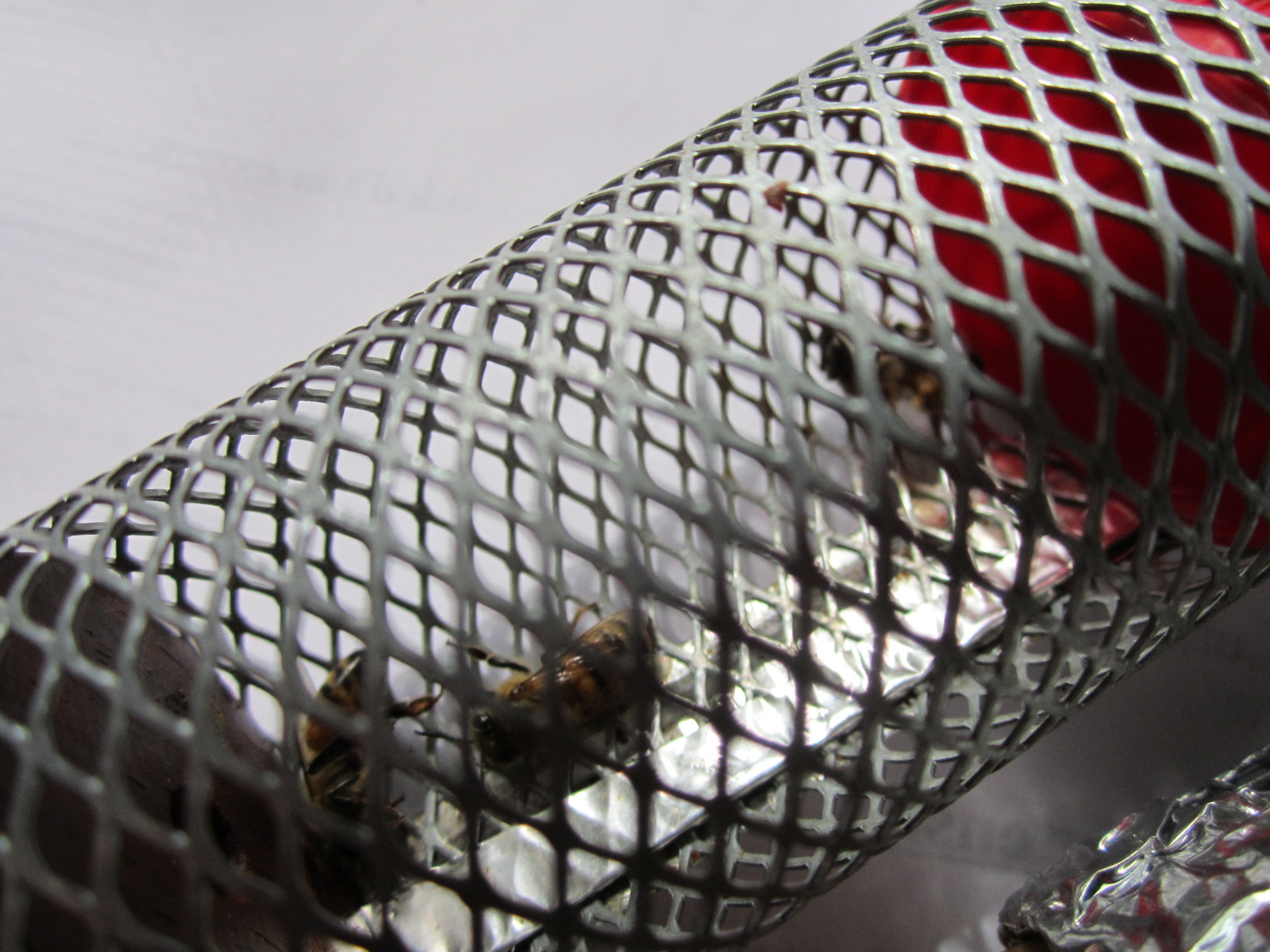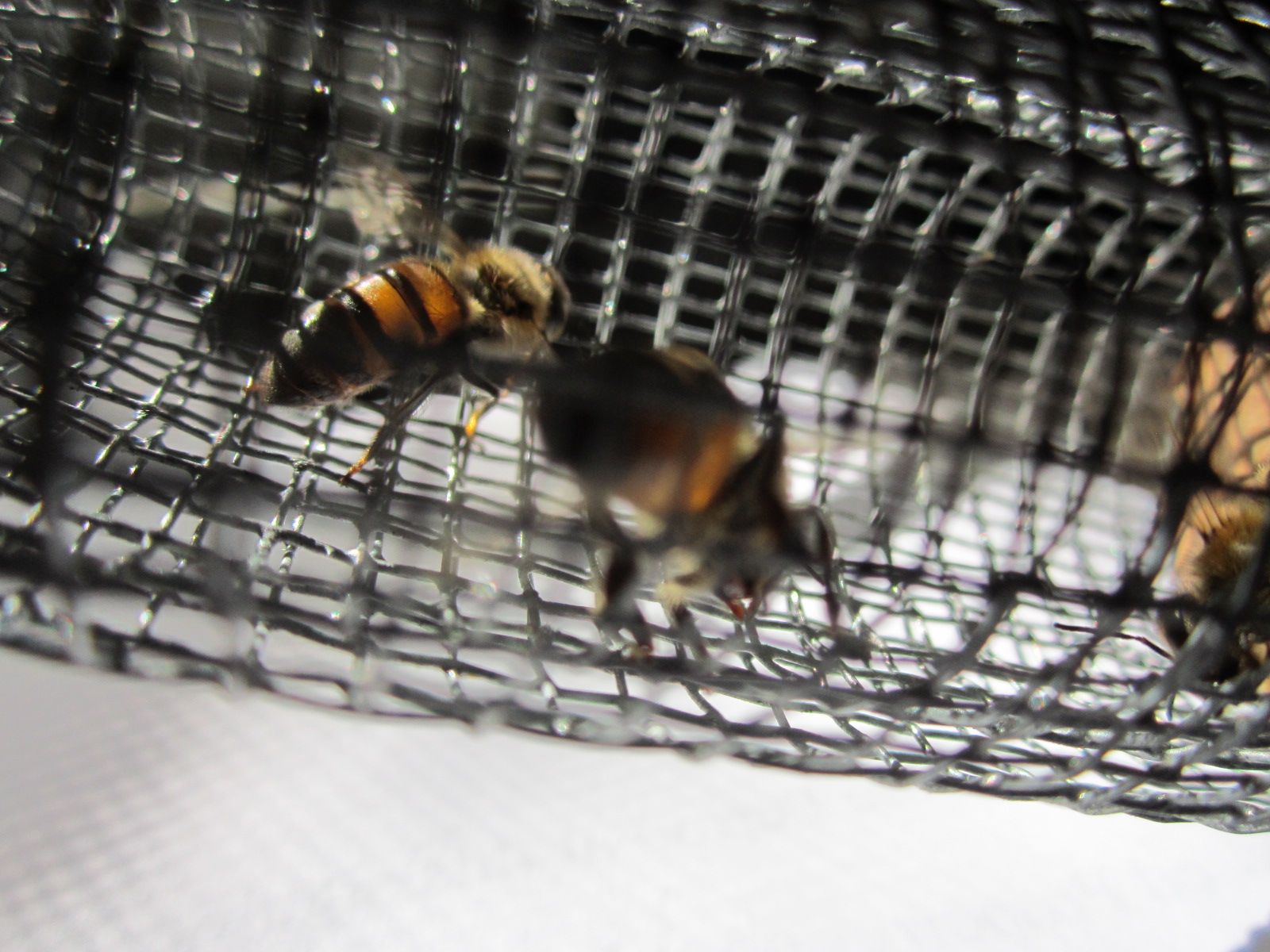How to keep a Queen Bee Alive in a Cage
Well I am fortunate to have a fantastic neighbor in Art Grigoryev, who gave me my first swarm, and has mentored me quite a bit.
Last Wednesday, he called to ask if I would like a queen that was from an established hive which he started from one of his hives swarming....I immediately said yes, but I did not have a queen cage, so I told him I would build one, and would be right over.
Here is a look at my apiary right now, with a number of nucs.
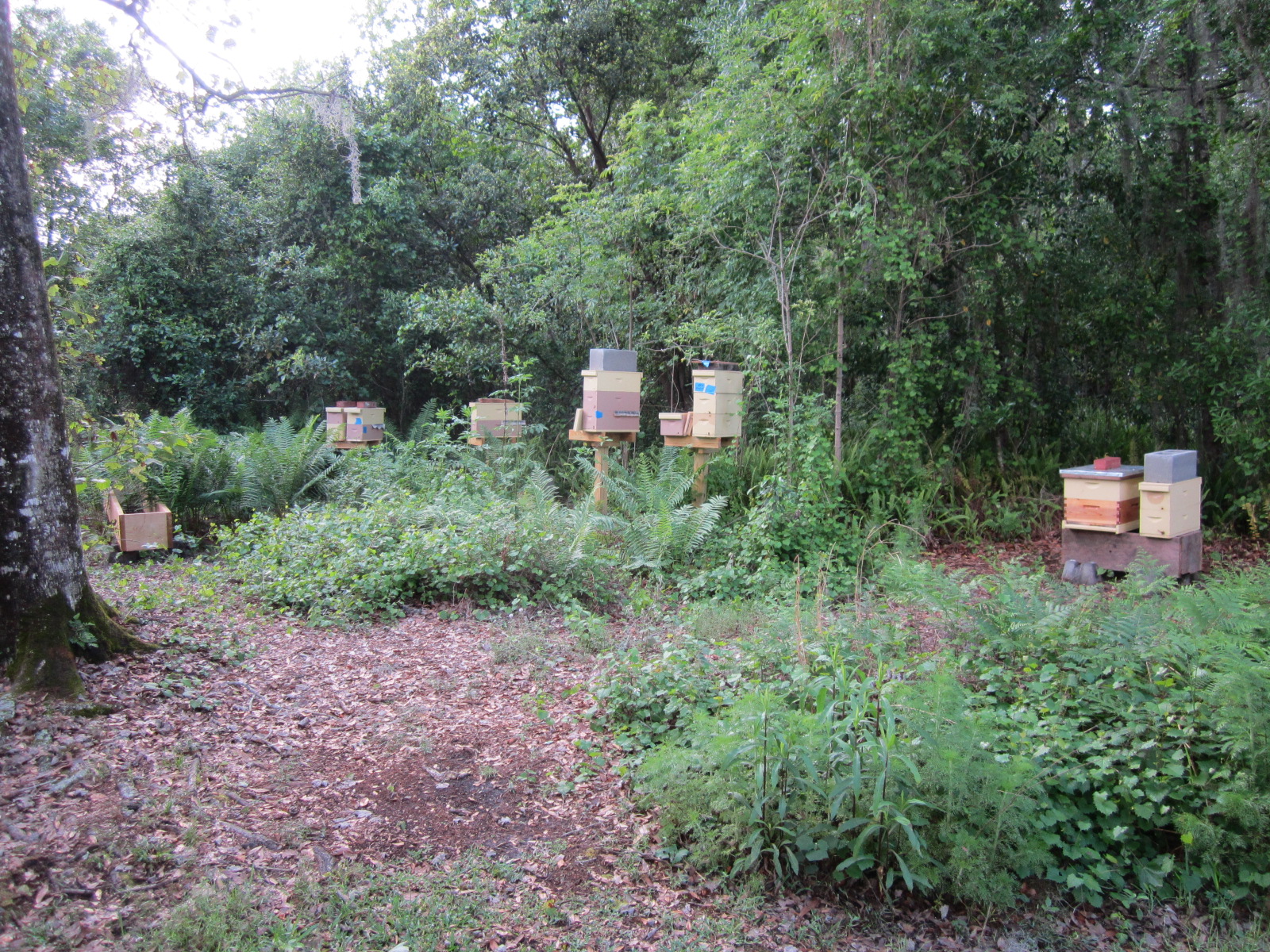
"Don't ask me how I know" was Art's advice on the subject given with a smile.
The two cages are shown below:
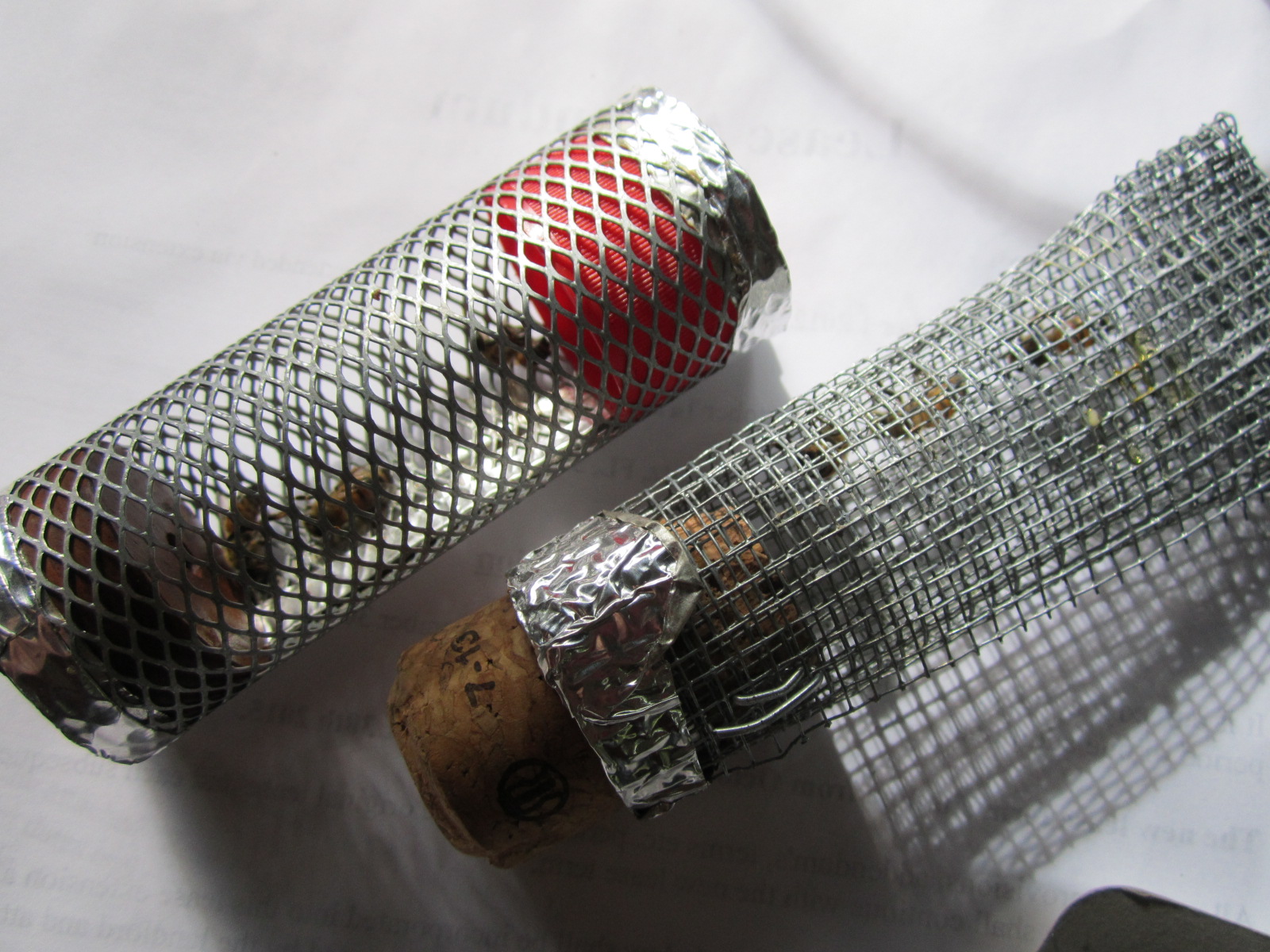
I came home, put my cage on a bench in the garage, thinking a quiet, fairly temperature neutral and dark place was needed, gave the bees a drop of water, then readied a two frame nuc to be queenless as their future home.
The next evening, to my astonishment, the queen and her attendants were dead!
I resolved to research the subject, and read about it Friday evening.
Here is Rachel taking charge last Saturday at the USF Beekeeping class we attend once a month at the USF Botanical Gardens:
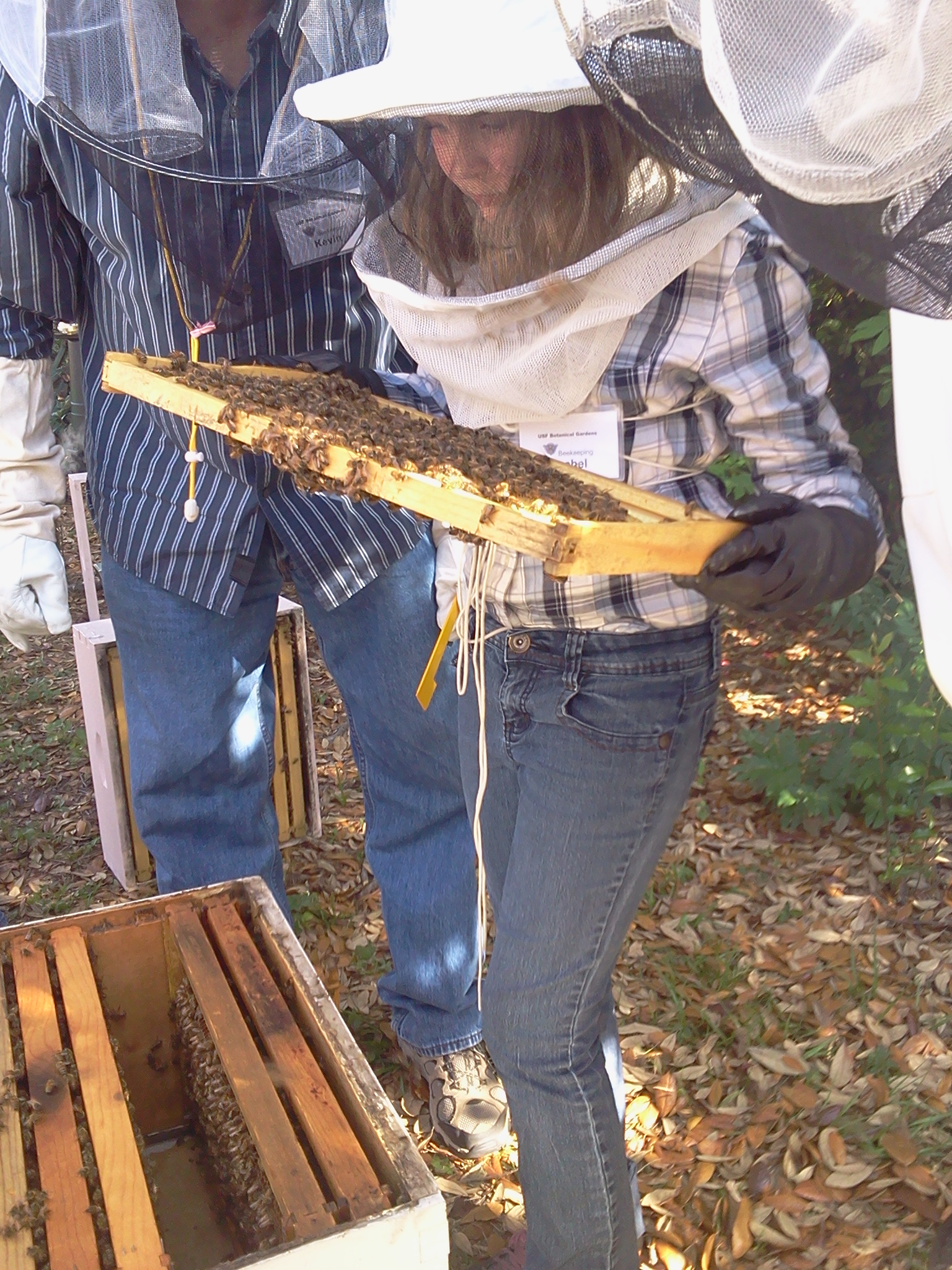
The hive made queenless for Art's queen did not go to waste. I beefed it up with bees and used it as a cell builder for six practice grafts I took after the bee class. Three days later, it appears that I will have two very nice queen cells.
Art called Saturday afternoon telling me he had another queen for me! I readily accepted, and fetched her, this time in his cage. I placed this cage inside a hive made queenless with a queen excluder above another nuc, expecting that the bees will look after the queen. This is called banking a queen.
Monday morning, I popped in before work to free the queen, and well, let me report, that evidently, this is where queens come to die!
I resolved to figure this out as I had not read anything yet to completely help me keep a queen healthy before her hive is ready.
I put three bees each in a cage at 1pm Monday, one as a planned control group, the other to be fed....This time, on my desk so I can keep and eye on them!
Within an hour, having expended a lot of energy fanning and protesting, both groups looked sluggish in their behaviour. By hour two, both cages looked positively listless, so I decided that I had better begin feeding.
To Feed the Caged Bees:
Dip the tip of a finger in honey and touch it to the cage. Repeat with water.
I added a drop of water and a drop of honey to the cage with the cork, and over the next hour or so, those bees started to perk up a bit, while the control group became more and more listless.
By hour four, I can state that the control group was dead, and the fed group was healthy. The picture below shows the cages.
Control group bees, at hour four - dead (Art's cage):
The fed group of bees in a queen cage - very much alive (my cage):
Day Two:
First thing this morning, the fed cage is going very well, the bees are healthy, fanning and protesting occasionally and ... the control group is dead....
Day Three:
Two out of three bees still alive and very healthy.
Day Four:
Two out of three bees still alive and healthy.
Day Five:
One out of three bees alive and healthy.
Lesson learned the hard way! Sorry Art!
My advice....if you put a queen in a cage, immediately feed the bees in it with a drop of honey and a drop of water, repeat daily .... or you will kill your queen!
Don't ask me how I know ;)
